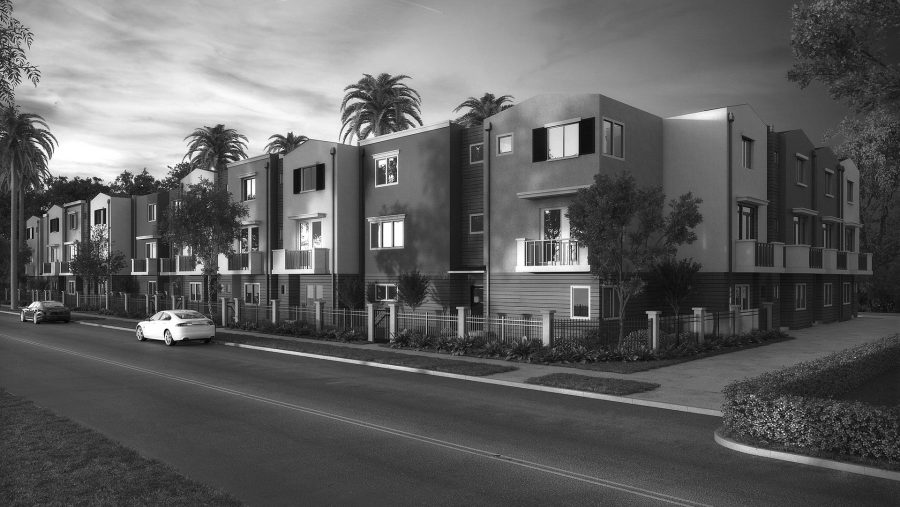As readers know, I’ve shown time and again how REITs are a great source of generous, safe, and growing income over time, and a favorite among high-yield investors – a group that includes those with low-risk tolerances such as retirees looking to live off dividends in their golden years.
During the Great Recession, the normally low-risk REIT investment thesis broke down. According to SNF Financial, 78 REITs cut or suspended their dividends during the worst financial meltdown since the Great Depression. As a result, the normally low volatility REIT sector saw a peak decline of about 70%, worse than the S&P 500’s grisly crash of 57%.
Here in 2019, U.S. economic growth is expected to slow up, as macroeconomic trends potentially point to a recession starting around mid-September 2020. Income investors haunted by the Great Recession might understandably be nervous about what to expect from REITs in the next economic downturn.
To help prepare investors for this high-yield sector’s performance in future recessions, let’s see what went wrong for REITs in 2007-2009.
REITS WERE DEVASTATED DURING THE GREAT RECESSION, BUT WHAT HAPPENED NEXT
REITs were the worst- and third-worst performing asset class, respectively, in 2007 and 2008… and then went on to become the best-performing in five of the next nine years (and best performer of the last 14 years).
This 2007 and 2008 underperformance was due, largely, to the financial crisis freeze of credit markets for most REITs, which had spent the relatively low-interest rate years of 2001 to 2007 taking on too much debt. And even REITs with dividends well-covered by stable cash flows (good payout ratios) were forced to conserve cash, in case the credit market freeze lasted for several years.
Today, the REIT sector’s collective balance sheet looks very different than 2007: the debt/asset ratio has fallen to the lowest levels in history, as interest coverage ratios have climbed to near record levels.
According to NAREIT, as of December 2018, 67 equity REITs (about 50% of them) had investment-grade credit ratings that accounted for 63% of the sector’s market cap. Three REITs have A- credit ratings and two have A credit ratings, according to S&P. That includes Simon Property Group (SPG), which was one of the overleveraged blue chips that cut its dividend during the Great Recession, but today, has one of the strongest balance sheets in corporate America.
REIT balance sheets are now so strong, according to NAREIT, that in 2018, despite two corrections, including the most severe one in ten years… REITs managed to raise equity capital 110 times, to the tune of $41.84 billion. And recall this was during a year when we faced a trade war escalation, the Fed hiking short-term rates four times, and growing 2019 recession fears.
This demonstrates that quality blue-chip REITs don’t face an existential threat to their business model; and for even more proof: a growing number of quality REITs are self-funding their growth with zero equity issuances, such as Simon Property, Tanger Factory Outlet Centers (SKT), and Brookfield Property Partners (BPY).
So maybe REITs aren’t likely to implode during the next recessionary bear market, and dividend cuts are likely to be far less common. But… what can income investors realistically expect from the sector at the next economic downturn?
THE TRUTH ABOUT REITS AND RECESSIONS
REITs were created by Congress in 1960 and modern data for the sector is available back to 1972.
Over that 46-year period, with six recessions and seven bear markets, equity REITs delivered double-digit total returns, beating the S&P 500, Dow Jones Industrial Average, and tech-focused Nasdaq. But what’s more, over the past 20 years, despite the financial crisis, REITs have been 28% to 35% less volatile than the broader stock market, according to a Dutch Asset study.
And you might be surprised how many times REITs go up during recessions. Since 1972, the average REIT total return in a year with a recession (meaning at least one quarter of negative GDP), has been positive 6.2%. And 75% of all recession years see REITs deliver positive total returns.
How’s that? Well, quality REITs, and especially blue chips, are often seen as attractive during bear markets, when growth stocks are crashing – as investors realize the benefit of getting paid quarterly while patiently holding stocks. And there’s a “flight to safety” to the biggest, most stable REITs – as we just saw, for example, with Realty Income (O), which managed to go up during the worst correction in a decade.
But ultimately, it’s the truth about recessions that’s sobering. The average recession lasts about one year (and the Great Recession lasted 1.5 years) – with an average GDP decline of just 1.9% (not 4% like during the financial crisis). Which means quality REITs are likely to offer a low volatility port in the next recession storm. And with mostly blue-chip names, you’re likely to enjoy a relatively safe harbor, as you wait the weather’s passing.
Bottom Line: REITs are a great low-volatility asset that hold up well during most recessions, and can help you sleep well at night during the next bear market.
Portions of this article appeared in the February issue of my Forbes newsletter, with contributions by Adam Galas, aka The Dividend Sensei.
Fans of this column will enjoy our “A-rated REITs” content in the March issue of my monthly Forbes Real Estate Investor. Hope you’ll join in. Click here to set your subscription.
I own shares in SPG, SKT, BPY, and O.







